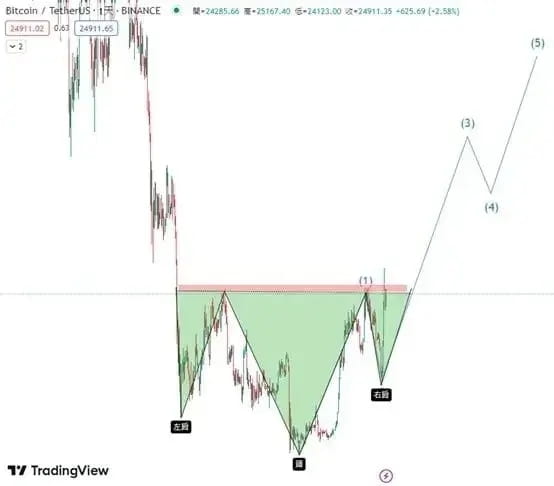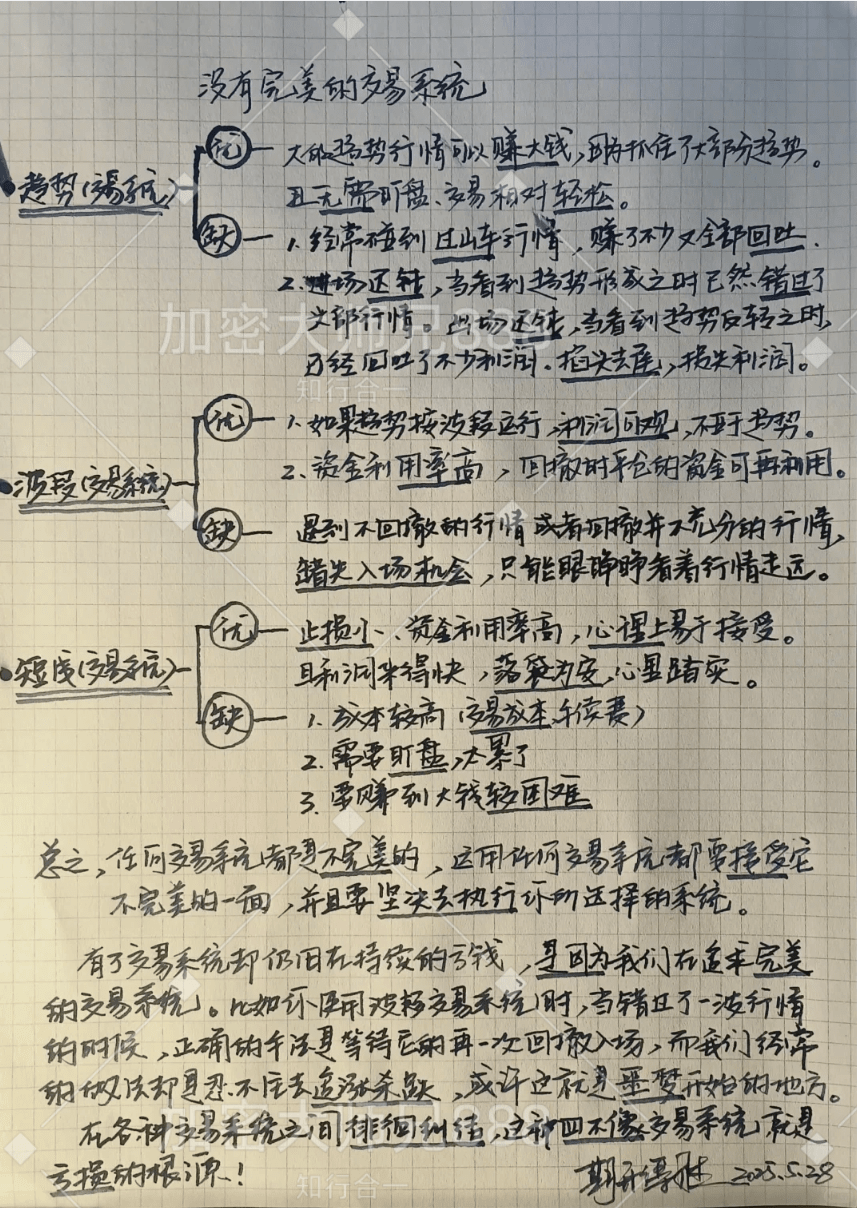Having been in the cryptocurrency market for several years, I believe I have outperformed 90% of contract traders. I have experience with funds, contracts, and arbitrage, and have also been ruthlessly harvested by market makers; I have encountered all the pitfalls that the market has to offer.
1. Core Trading Logic: Certainty First, Volatility Second
Trend Confirmation and Cryptocurrency Selection
In a Bull Market: Prioritize cryptocurrencies with clear technological upgrades and increased institutional holdings. For example, in May 2025, Ethereum (ETH) soared 40% to 2600 USD within 72 hours due to the Pectra upgrade introducing account abstraction and higher staking limits. Focus on mainstream coins like ETH and Solana (SOL) at this time, avoiding excessive chasing of altcoins.
In a Bear Market: Short cryptocurrencies with low volatility to avoid violent rebounds. Bitcoin (BTC) exhibited significantly lower volatility in 2025, reflecting institutional characteristics, with a correlation to the S&P 500 stabilizing at 40%-60%, making it a relatively safe short target. Even if mainstream coins decline more, shorting BTC still reduces risk.
Precise Control of Entry Timing
Breakout Pullback Strategy: Taking ETH as an example, when the price breaks above the upper Bollinger Band (e.g., 2000 USD), wait for a pullback to the middle band (1900 USD) or EMA30 moving average (1880 USD), while ensuring reduced trading volume (below 50% of the breakout volume) and stable open interest (OI); this increases the probability of success for opening long positions.
Funding Rate Arbitrage: When the BTC perpetual contract funding rate reaches +0.1% and the spot price is range-bound, a hedging strategy of 'shorting contracts + buying spot' can yield an annualized rate of return of 36%, but ensure that fees and borrowing costs are less than the returns.
2. Fund Management: Precise Control of the Lifeline
Position Allocation Formula
Single Trade Risk Control: Each trade should not lose more than 2% of the principal. For example, with a principal of 10,000 USD, the maximum loss per trade is 200 USD. If going long on BTC, with an opening price of 60,000 USD and a stop-loss price of 58,000 USD (a drop of 3.3%), the position calculation is: Position = (60000 - 58000) / 200 = 0.1 BTC (leverage = 6 times)
Volatility Adjustment: If BTC's recent average volatility (ATR) is 2000 USD, the stop-loss can be widened to 1.5 times ATR (3000 USD), and the position can be reduced to 4000 USD (leverage 4 times) to adapt to a high-volatility market.
Dynamic Position Management
Single Position Mode: Allocate 10% of the principal (1000 USD) specifically for ETH trading, with a leverage of 10 times (margin of 100 USD). Start position with 50% (50 USD), if the price rises by 2%, increase by 30% (30 USD), with the remaining 20% reserved for supplementary positions. In extreme market conditions, prioritize closing profitable positions to retain principal.
Correlation Hedging: For every 10,000 USD long on BTC, short 8,000 USD on ETH (correlation approximately 0.8). In March 2024, a trader using this strategy only lost 0.5% when BTC retraced 5%, while unhedged losses amounted to 5%.
3. Technical Analysis: A practical framework that simplifies complexity
Core Indicator Combination
Naked K Patterns: Focus on engulfing patterns, hammer candlesticks, hanging man candlesticks, and other reversal signals. For example, before ETH broke through 2600 USD in May 2025, a bullish engulfing pattern appeared on the 4-hour chart, confirming a trend reversal with increased trading volume.
Dynamic Bollinger Bands: Dynamically adjust the period based on market volatility (N value limited to 20-60). Open long when the price breaks above the upper band, short when it breaks below the lower band, and close when it returns to the middle band. This strategy achieved an annual return of 67% with a maximum drawdown of 15% in backtesting.
Funding Rate: When the perpetual contract funding rate reaches ±0.05%, it may trigger a reversal of long and short forces. For example, in March 2025, the ETH funding rate plummeted from +0.12% to -0.05%, causing arbitrageurs to lose over 25% in a single day.
Dynamic Take-Profit Strategy
Three-Tier Take-Profit Method: Taking SOL as an example, when the current price is 150 USD, the first take-profit is 160 USD (close 30%), the second is 170 USD (5% retracement trailing stop, close 50%), and the third is 180 USD (1% below resistance, close remaining 20%).
Cost Price Stop-Loss: After making a profit, move the stop-loss for the remaining position to the opening price to ensure no loss of principal. For example, after making a profit on ETH at 2600 USD, set the stop-loss at 2500 USD to retain potential gains while avoiding retracement risks.
4. Risk Control: Exchange Mechanisms and Market Sentiment
Funding Rate Traps
Perpetual contract funding rates are settled every 8 hours, and long-term positions need to calculate annualized costs. For example, going long on BTC with 5x leverage incurs a fee of 0.05% every 8 hours, resulting in an annualized cost of up to 54.75%. Day traders can close positions before settlement to avoid fees.
Exchanges like Binance have adjusted settlement frequencies. When the funding rate reaches ±0.3%, the settlement frequency increases to hourly, requiring timely strategy adjustments.
Response to Extreme Market Conditions
Position Reduction Protection: When the price triggers the exchange's 'position reduction protection' mechanism, prioritize closing profitable positions to retain principal. For example, in March 2025, during a sharp decline in ETH, a user avoided full liquidation using this strategy.
Limit Price Stop-Loss: In extreme market conditions like the flash crash of DOGE, market price stop-losses may experience a slippage of 12%. In such cases, use limit price stop-losses to lock in prices.
5. Market Characteristics and Strategy Adjustments in 2025
Rotation of mainstream cryptocurrencies
ETH remains a core asset, but Solana (SOL) skyrocketed 24% to 174.64 USD in March 2025 due to its inclusion in the US crypto reserve, becoming a new strong currency. It is recommended to include SOL as a long target in a bullish market.
Selection of short targets
Bitcoin (BTC) volatility is decreasing, making it suitable as a stable short target, but leverage should be controlled within 10 times. For high-risk tolerators, it is advisable to short narrative-driven meme coins (such as CHILLGUY, MOODENG), but exit timely if the funding rate turns negative or the price drops below EMA50.
Tools and Technology Upgrades
AI Fund Management: Platforms like Matrixdock dynamically adjust investment strategies through AI, optimizing positions with on-chain data, resulting in annualized returns of over 30%.
Cross-Platform Arbitrage: Utilize liquidity differences on decentralized exchanges like Hyperliquid to conduct hedging arbitrage when BTC contract prices deviate from spot prices by more than 0.5%, but be aware of liquidation risks.
6. Psychological Construction: Anti-human execution discipline
Positive Belief System
Establish the understanding that 'losses are costs, not failures' and cultivate discipline through simulated trading. For example, when testing a dynamic Bollinger Band strategy, first conduct a 3-month historical backtest, then validate with 1% of the principal in real trading.
Emotional Monitoring Mechanism
Set a daily maximum loss limit (e.g., 5% of the principal), and stop trading once reached. Use an 'Emotional Log' to record the psychological state during each trade and analyze triggers for emotional decisions.
(1) Identify the main trend and trade in the direction of the main trend; otherwise, do not enter the market.
(2) If you are trading in the direction of the trend, entry points:
1. New breakout points of the trend;
2. Breakout points of sideways consolidation trending in one direction;
3. Retracement points in an upward trend or rebound points in a downward trend.

(3) Following the trend will bring you substantial profits; never exit prematurely;
(4) If the position aligns with the larger trend and the paper profit has confirmed your correctness, pyramid in additional positions; (Reference Two)
(5) Maintain positions until the trend reverses and close positions.
(6) If the market trend is contrary to your position, stop-loss and run.
In addition to adhering to the above strategies, remember three qualities: discipline, discipline, and discipline!
The way of trading is to accumulate small amounts into a larger sum; compounding is king. If you drift away from your cost, you must not revert to losses. If you have made a profit, ensure to take some off the table to prevent working for nothing. In summary: if you earn, take bold steps; if you have remaining at the original price, cut losses.

If you are also a tech enthusiast feeling helpless and confused in trading, and want to learn more about the cryptocurrency space and cutting-edge information, click on my profile and follow me to avoid getting lost! Clear market insights empower your actions. Steady gains are far more practical than fantasizing about getting rich quickly.